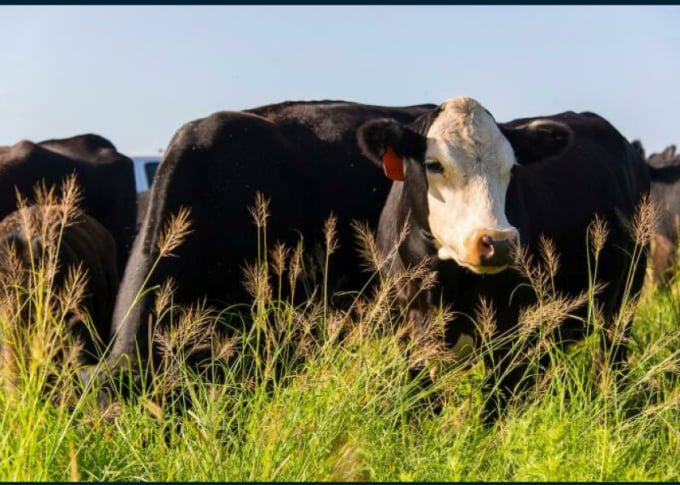November 27, 2025 | 04:15 GMT +7
November 27, 2025 | 04:15 GMT +7
Hotline: 0913.378.918
November 27, 2025 | 04:15 GMT +7
Hotline: 0913.378.918

Cattle on forage. Photo: Agweb
The same is true for forages, according to Scott Flynn. He encourages producers to view their operations as profit-per-acre businesses, rather than focusing on the price they get for an individual animal.
The shift in mindset requires producers to evaluate the number of pounds of beef they produce per acre of pasture.
“Forages are the cheapest source of energy available and key to our economic success,” explains Flynn, a Missouri-based field scientist for Corteva Agriscience.
He estimates it costs 45 cents a day to feed a cow or steer on pasture, while feeding hay costs considerably more. It’s why Flynn encourages producers to evaluate their pasture weed-control measures.
“For every pound of weed pressure in a field, you remove 1 lb. to 1.5 lb. of forage production, so losses can quickly add up,” he explains.
“By eliminating weeds, the producer often has more options. They could choose to increase the number of cattle on pasture to take advantage of the increased forage available, or they might extend the grazing period further into the fall and save some dollars in feed costs,” he adds.
Here are five weed-control considerations that can help you add more pounds of beef per acre.
Record the weeds you have, along with when and where you see them, which can help you evaluate how well your weed-control program is working. In the process, keep in mind that weed species differ on when they emerge. For instance, biennial and winter annual weeds begin to emerge in late summer and fall, notes J.D. Green, University of Kentucky Extension weed scientist.
“You can treat some problem weeds, like musk thistle and poison hemlock, into October and sometimes even November as long as daytime temperatures are above 60 degrees F°,” he says. “2,4-D does a pretty good job on those weeds when they’re in the younger vegetative growth stages and actively growing.”
If not treated this fall, address cool-season weedy species in the early spring while plants are still small, adds Daren Redfearn, University of Nebraska Extension forage and crop residue specialist.
For cool-season grasses, Flynn recommends keeping at least 3” of grass. For warm-season grasses, keep at least 6” to 8” of growth.
“At that point, allow the forage to recover a bit,” he says. “I’ve seen the practice of resting actually double the amount of forage available. A great saying that I like and that’s so true is ‘grass grows grass.’”
“We find that if 25% to 30%, of your herbage in the field is made up of non-desirable species – that if we can get those under control and convert that back over to forage biomass – it would justify spending upwards of $20 to $25 an acre for a herbicide and the application,” Flynn says.
(Agweb.com)

(VAN) A new study reveals how the simultaneous effects of ocean acidification, salinity and loss of oxygen are making the world more fragile.

(VAN) Hopes are growing that the creation of the first 3D turkey gut model could be a turning point in the battle against the virulent blackhead disease.

(VAN) Tyson, America’s biggest meat supplier, plans to shutter one of its largest beef processing plants as the industry continues to struggle with low cattle supplies and political pressure from Washington.

(VAN) New FAO study shows how digital solutions are empowering farmers and fishers to prevent losses and build resilient agrifood systems.

(VAN) Brazil's COP30 presidency pushed through a compromise climate deal on Saturday that would boost finance for poor nations coping with global warming but that omitted any mention of the fossil fuels driving it.

(VAN) Poultry farmers in the UK have been warned that they could face one of the worst winters yet for bird flu.

(VAN) Prices of main-crop paddy have risen sharply, with jasmine rice hitting 16,100 baht per tonne — the highest level in years.